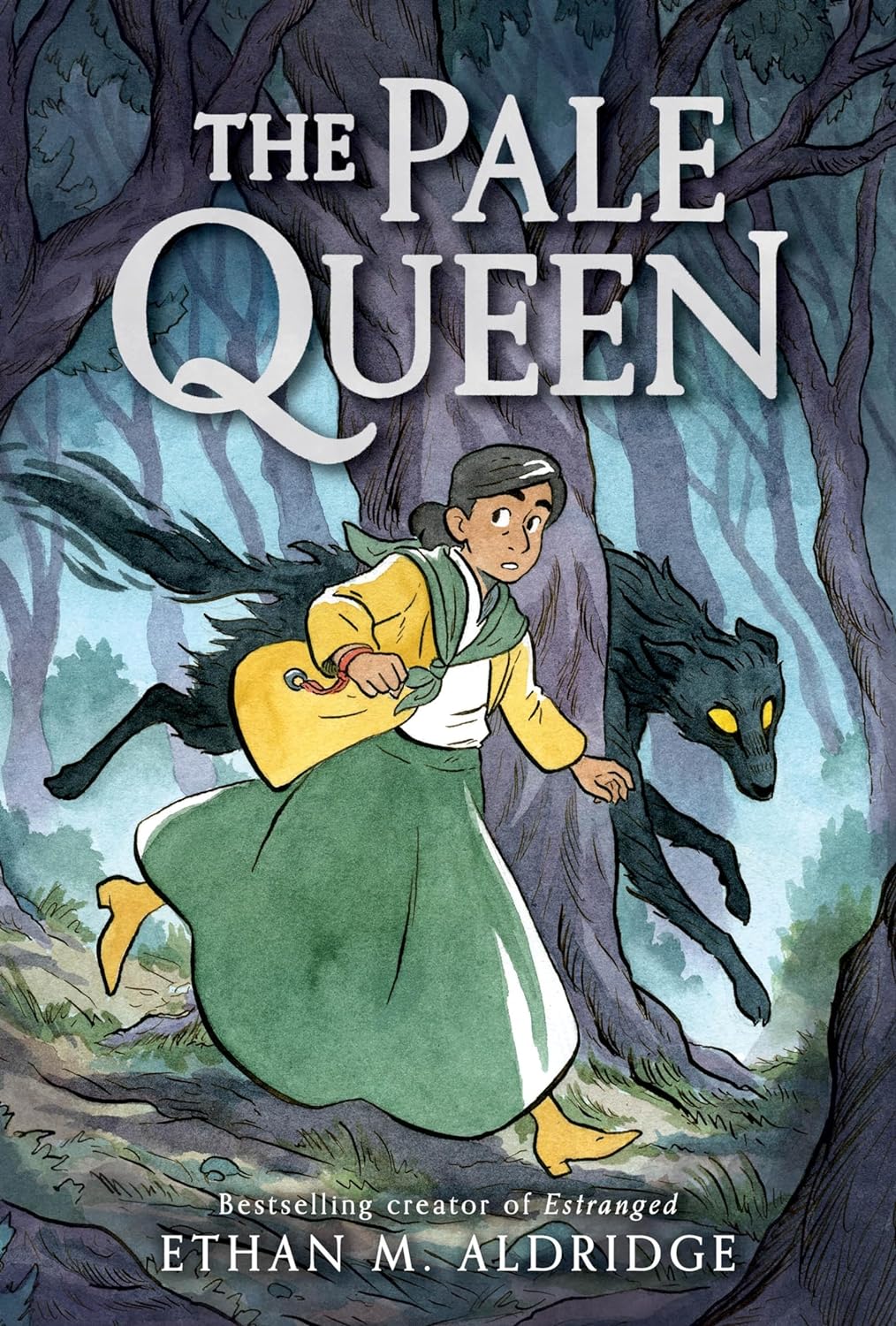The Pale Queen by Ethan M. Aldridge is a poetic middle grade graphic novel that draws inspiration from fae myths and folklore to tell a story about the support it takes to pursue your biggest dreams—and the sacrifices we are and aren’t willing to make along the way. In particular, it will appeal to young readers lookingRead More
Beware the Fae (Even When Gay): The Pale Queen by Ethan M. Aldridge
Buy this from Bookshop.org to support local bookstores and the Lesbrary! I just want to bask for a moment in the reality that we live in a time where an author can go to a major publisher and say, “Here’s my pitch for a book: a sapphic gothic romance graphic novel for middle schoolers” andRead More
Stories About Brave Women Who Don’t Take Shit from Anyone: The One Hundred Nights of Hero by Isabel Greenberg
Amazon Affiliate Link We all have our preferred coping methods. Mine is returning to comforting favorites: books that changed me, those old familiar stories that still move me, no matter the intervening years. These last seven years, Isabel Greenberg’s graphic novel The One Hundred Nights of Hero has been waiting quietly for me to pick it upRead More
A Sapphic Gothic Fairy Tale: Down Among the Sticks and Bones by Seanan McGuire
Bookshop.org Affiliate Link My favourite holiday of the year is Dewey’s 24 Hour Readathon, particularly the October readathon. My roommate and I spend all day reading horror books and snacking. It is a delight. Last year, I read Every Heart a Doorway and really enjoyed it. The horror/fantasy novella series felt like a perfect fitRead More
Sam reviews Other Ever Afters by Melanie Gillman
Amazon Affiliate Link | Bookshop.org Affiliate Link If you spend much time on Tumblr—and who doesn’t, these days—there’s a good chance you’ve seen at least one of Melanie Gillman’s gay fairy tale 24-hour comics. They’re well-loved on the microblogging social media, and for good reason. With simple but beautiful panels, an enchanting storybook feel, andRead More
Vic reviews The Wicked Remain (The Grimrose Girls #2) by Laura Pohl
Amazon Affiliate Link | Bookshop.org Affiliate Link The Wicked Remain by Laura Pohl is the follow-up to last year’s The Grimrose Girls and exactly the conclusion this duology deserved, which is to say it was clever, full of hope, with a clear love of stories and rage at their prescribed endings. While I will try to avoid spoiling eitherRead More
Danika reviews The Book Eaters by Sunyi Dean
Amazon Affiliate Link | Bookshop.org Affiliate Link This dark fairy tale dances on the line between fantasy and horror. It follows Devon, a book eater, who is part of one of the aristocratic houses of book eaters (think vampires, but they eat books instead of drinking blood). She is one of very few women bookRead More
Danika reviews The Drowned Woods by Emily Lloyd-Jones
Amazon Affiliate Link | Bookshop.org Affiliate Link “She had never been brave–but she’d always been angry. It would have to be enough. I picked up this Welsh dark fantasy heist novel because I was promised two things: a corgi and bisexuality. I’m happy to say that it delivered on both. And now I need moreRead More
Danika reviews Other Ever Afters: New Queer Fairy Tales by Melanie Gillman
Amazon Affiliate Link | Bookshop.org Affiliate Link Melanie Gillman is one of my favourite artists. I even support them on Patreon–which I highly recommend, because you get to read their travel diary comics and sometimes you get little zine-style comics in the mail. You might remember their YA graphic novels, As the Crow Flies andRead More
Danika reviews Briar Girls by Rebecca Kim Wells
Amazon Affiliate Link | Bookshop.org Affiliate Link This is a YA fantasy book about Lena, a girl who kills everyone she touches. Her parents have been keeping her hidden, moving around a lot whenever things get dicey–Until one day, her mother leaves and never comes back. The witch who cursed Lena is still looking forRead More
- 1
- 2
- 3
- 4
- Next Page »
